THE REAL STORIES
Now that our trip through Magic Kingdom at Possibility World has come to an end, let’s revisit each of the phenomenal things we’ve seen to explore what really happened that kept these could-be classics from being built…
Main Street, U.S.A.
Details are scarce on why Walt Disney World cancelled the massive, Broadway-style theater earmarked for Main Street after officially filing construction paperwork and even beginning preliminary construction, but from its announcement in 2017 to its cancellation in February 2018, momentum on the project simply stalled.
Image: Disney
It’s likely that the theater simply became overwhelmed by the rest of the resort’s active projects (including Mickey and Minnie's Runaway Railway, Epcot’s Guardians of the Galaxy and Ratatouille rides, and Magic Kingdom’s own version of the Modern Marvel: TRON – Lightcycle Power Run). Equally noteworthy – recent budget cuts across Walt Disney World have leveled “streetmosphere” entertainment that the parks are known for, perhaps signaling that entertainment ranks low on the priorities of Parks chairman Bob Chapek (a notorious fan of intellectual properties and merchandising).
Main Street still uses the auxiliary secondary corridor during high-pressure times, but it’s nothing more than a lightly-decorated “walk in the park” with fencing and trees rather than the detailed secondary streetscape the theater would’ve turned it into.
Adventureland
Fire Mountain fizzled out, and the Vulcania sub-land of zephyrs, lighthouses, and steampunk around it never came to be. For as long as Disney Parks have been around, designers have been trying (sometimes successfully!) to incorporate the works of renowned European fantasy author Jules Verne.
And really, it makes sense! In California, Disneyland's Adventureland was re-wrapped into one overarching continuity in 1995, uniting each of the land's rides and attractions into the timeline of the Modern Marvel: Temple of the Forbidden Eye. Magic Kingdom’s Adventureland, on the other hand, has always (and increasingly) been a genre bending “mix tape” of adventure motifs – African colony houses, Asian ruins, Polynesian plazas, Arabian bazaars, and Caribbean fortresses, all set together in a somehow-harmonious way. Adding the science-fantasy literary adventures of Verne simply feels like yet another mini-land within the park’s adventure sampler.
Image: Disney
At the dawn of the New Millennium, plans for Fire Mountain resurfaced, this time built around 2001’s Atlantis: The Lost Empire (a Verne-esque animated adventure film), recasting Nemo’s Vulcania as Whitmore Enterprises Base Camp. Atlantis didn’t fare as well as Disney had hoped at the box office, which quickly stripped the animated overlay from plans. But then, the tourism downturn in the wake of September 11, 2001 dried up any hopes for Fire Mountain…
At least, until recently when fans began to insist that a re-do with Moana were in the works… Until we hear more, Fire Mountain remains a Possibility World exclusive, and stands among our must-read Possibilityland: Never-Built Disney "Mountains" lineup.
Image: Disney
Meanwhile, Imagineers have successfully based two iconic "mountain" attractions around Jules Verne stories – DisneySea's spectacular Modern Marvel: Journey to the Center of the Earth, and Disneyland Paris' industry-altering Lost Legend: Space Mountain – De la Terre à la Lune. Both – to some extent – feature the accompanying "Vulcania" as well.
Frontierland
The Western River Expedition is just one of the fantastic and unbelievable attractions designed by Disney Legend Marc Davis that ultimately ended up on the chopping block. (A similarly scaled adventure through the legend of the Snow Queen, The Enchanted Snow Palace, ended up in our alternate history Disneyland, Possibilityland itself.) Still, the gargantuan dark ride is perhaps one of the most lamented never-built projects in Disney history.
Image: Disney
So why wasn’t it built? As the popular story goes, early visitors to Walt Disney World were aghast to find that the park did not contain the “Pirates of the Caribbean” ride they’d heard so much about (less than five years old at Disneyland, and still the talk of the town). Guests practically stormed City Hall wanting to know when the Pirate ride would open. Demand was so high that executives tasked Marc Davis with abandoning his Western River Expedition and fast tracking a low-budget version of Pirates of the Caribbean instead.
It might be for the best. By the early ‘70s, the era of Westerns was coming to an end. Back when Disneyland opened in 1955, Americans’ fascination with the “Old West” was at an all-time high. It was the era of spaghetti Westerns, The Lone Ranger, Zorro, Davy Crockett, and Howdy Doody that had children of the era playing “Cowboys and Indians” from sun-up to sundown. But even by the early ‘70s, pop culture was shifting. The age of the Western was over (and arguably, hasn’t had a resurgence since, despite some earnest efforts).
Image: Disney
Besides, a certain level of discomfort began to develop in the era about pop culture’s prior treatments of American Indians, and a dark ride full of comical invading “Redskins” doing "rain dances" didn’t mesh well with a more reverent and thoughtful way of representing the country’s original inhabitants.
Thunder Mesa’s other attractions – like the log flume, runaway mine train, the restaurant, and the hiking trails – actually felt like a better solution for Frontierland’s problems… and Disney’s. Without Walt at the helm, the ‘70s are largely marked by “cheap and cheerful” attractions (read: steel roller coasters) that would be attractive and thrilling to the young audiences showing up at Disney World without breaking the bank like those ambitious dark rides of Walt’s era.
Image: Disney
Ultimately, the designer working on the runaway mine train portion of Thunder Mesa – a young man named Tony Baxter – made a compelling argument that his roller coaster could be separated out from Thunder Mesa and become an E-Ticket in and of itself, costing Disney a whole lot less than the dark ride. Big Thunder Mountain was born, reviving Frontierland and quickly spreading to most every Disney park on Earth.
Fantasyland
Obviously we know that, despite their initial idea, dark rides for Sleeping Beauty and Cinderella didn’t ever make it to Magic Kingdom. Instead, the park opened with the same three Fantasyland dark rides that Disneyland had offered sixteen years earlier: Peter Pan’s Flight, Snow White’s Scary Adventures, and the Lost Legend: Mr. Toad’s Wild Ride.
In 2009 – almost four decades after those dark rides debuted at Magic Kingdom – plans for New Fantasyland were announced, overtaking the space vacated by 20,000 Leagues' closure in 1994.
Image: Disney
When Disney Parks fans got a hold of the plans for New Fantasyland in 2009, they weren’t exactly thrilled with the picture. Fans quickly noted an apparent skew toward Disney's Princess brand.
And that might've been fine, except that fans took the expansion to be a direct answer to the industry-changing Wizarding World of Harry Potter opening at Universal’s Islands of Adventure just a few miles away… and, to fans' thinking, if an entire land of princess meet-and-greets and a single recycled dark ride from Disney California Adventure was meant to be Disney’s answer to Harry Potter, they had better go back to the drawing board.
Image: Disney
To Imagineering’s credit, they did. When Disney returned to the semi-annual D23 Expo in 2011, it was to re-announce Magic Kingdom’s New Fantasyland… with some edits. Areas dedicated to The Little Mermaid and Beauty and the Beast (including the only "play and greet" in the land, Enchanted Tales with Belle) remained, but most everything else had changed.
Image: Disney
Now, the myriad of princess "play and greet" cottages that filled the land’s forested “island” center would be replaced by the Seven Dwarf’s Mine Train – a family roller coaster / dark ride set between the Barnstormer and Big Thunder Mountain in terms of thrills.
Of course, Disney’s popular princesses would still need a place to greet their fans… but the many meeting points were condensed into one Princess Fairytale Hall that, unfortunately, would need to take over the Lost Legend: Snow White’s Scary Adventures. The Princess Fairytale Hall is also a typical meet-and-greet experience rather than the more immersive, interactive "play and greets" planned for the land.
Image: Disney
Otherwise, the New New Fantasyland would also cancel the Pixie Hollow sub-area meant to overtake Mickey's Toontown Fair. But the Lost Legend: Mickey’s Toontown Fair wouldn’t survive, either. Instead, its “fair” infrastructure, Dumbo the Flying Elephant, and Goofy’s Barnstormer would be salvaged and redressed as a new part of Fantasyland called Storybook Circus, overlaid with a bit more detail, placemaking, and reverence than Toontown Fair.
Bald Mountain (or Villain Mountain) also never made it off the drawing board. It’s anyone’s guess why, but a popular theory is that Disney began seriously toying with the idea of centering a (never-built) fifth Walt Disney World park around the Villain franchise (nearly as popular as the Princess one) or creating a grander Villains themed land (rumored to be called Shadowland) somewhere at Walt Disney World. Naturally, it would be foolish to “waste” an E-Ticket that could fit in a fifth park or without plans for Shadowland ready to move forward.
Tomorrowland
Image: 20th Century Fox
NOSTROMO was a no-go. Despite Michael Eisner’s insistence that Disney Parks should become hip, cool, thrilling places filled with the stories and characters that mattered to modern audiences, veteran Imagineers recruited George Lucas to help convince the fresh CEO that Alien was simply too intense for Magic Kingdom. Besides, can you imagine an attraction where guests – children! – were armed with guns and set loose to fire on targets?
Still, Eisner liked the concept and requested that his design team go back to the drawing board to create an original alien that would be slightly less frightening than the R-rated Fox film’s antagonist… oh, and that they should save as much money as possible in the cost-cutting era after Disneyland Paris’ opening, maybe by doing something with the outdated “Mission to Mars” theaters that plagued Disneyland and Magic Kingdom.
Image: Disney
Though NOSTROMO was cut, it developed into the equally controversial Lost Legend: The ExtraTERRORestrial Alien Encounter – a cult classic sensory dark ride that terrorized a generation of Disney Parks guests from its opening in 1994 to its retirement in 2003. One might imagine that the “laser gun” attraction NOSTROMO was original envisioned as eventually evolved into Buzz Lightyear’s Space Ranger Spin and its Toy Story spin-offs at each Disney "castle" park across the globe.
Image: Disney / 20th Century Fox
Still, we might've gotten some idea of what an Alien dark ride would've been like... 20th Century Fox's famed Xenomorph did make it to Walt Disney World in Audio Animatronics form aboard the Lost Legend: The Great Movie Ride at the Disney-MGM Studios, in a scene whisking guests through the steaming, industrial innards of the Nostromo.
Possibilities
Image: Disney
How different is this “Possibility World” park from the one we know? Would Magic Kingdom be a different place if these projects had come to be? A better place? That may be a question no one can adequately answer. But at least it gives us a chance to imagine what could be… Meanwhile, Magic Kingdom may be the most familiar park here in “Possibility World…” because a visit to Epcot, Disney’s Hollywood Studios, or Disney’s Animal Kingdom here at this alternate-reality resort will leave you amazed…
And if you haven’t, be sure to read our original Possibilityland entry, taking the same walk around Disneyland to see its never-built projects, including Indiana Jones and the Lost Expedition, Discovery Bay, Tomorrowland 2055, Edison Square, Circusland, and so many more would-be exclusives planned for Walt’s original park.
Would you like us to continue this new series with walkthroughs of the other parks of Possibility World? Let us know by leaving a comment and sharing on social media… Before you know it, we may be stepping through the gates of an Epcot you barely recognize…
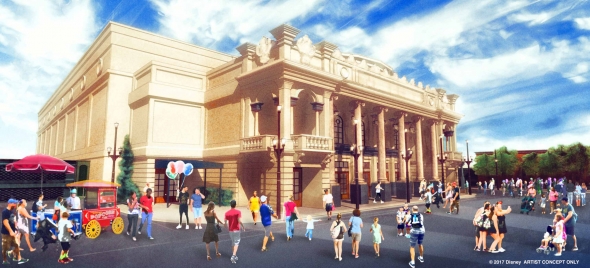
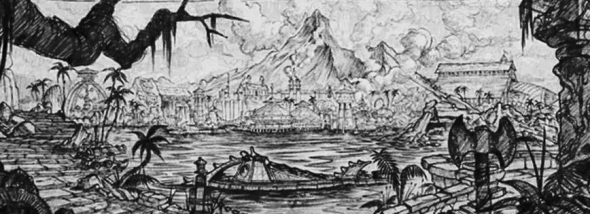
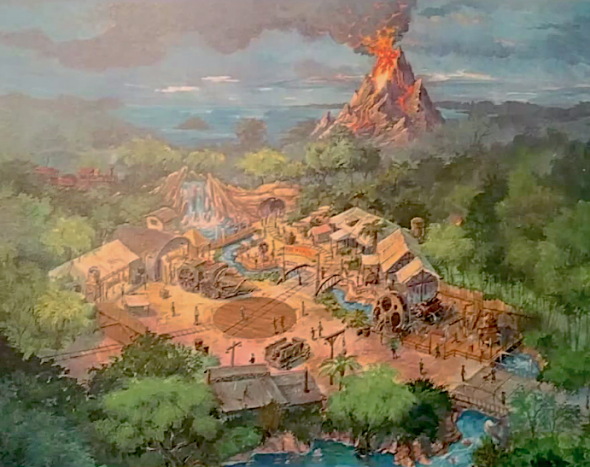
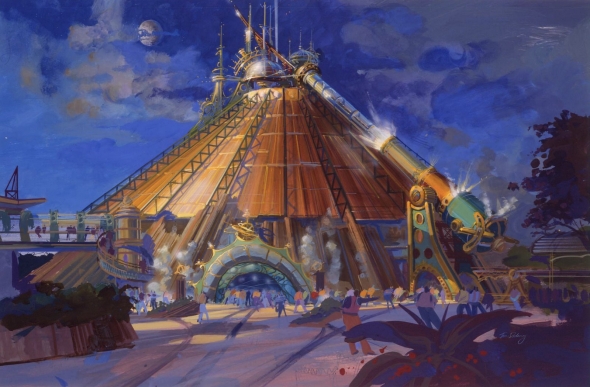

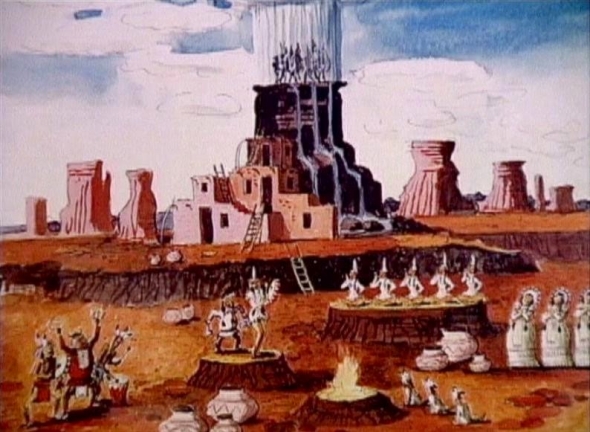
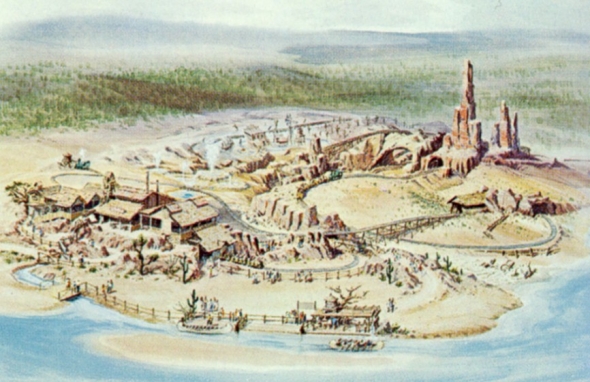
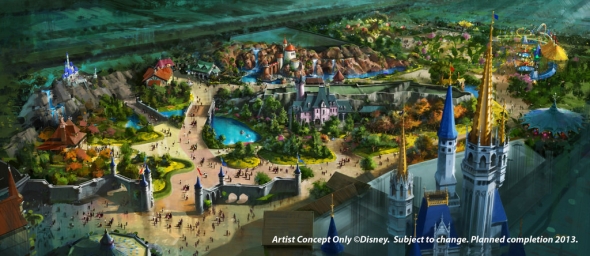
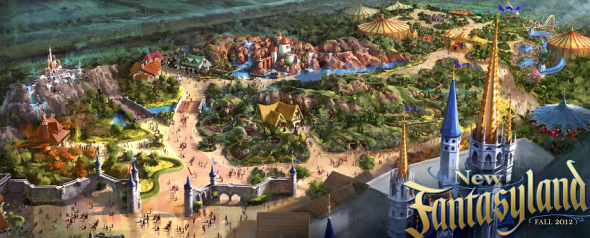
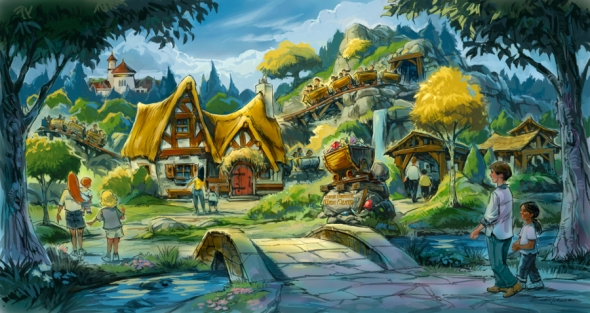
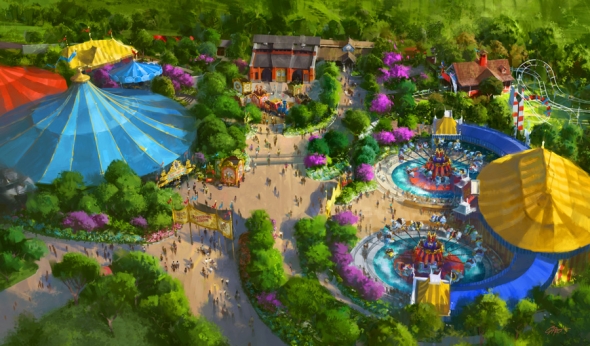
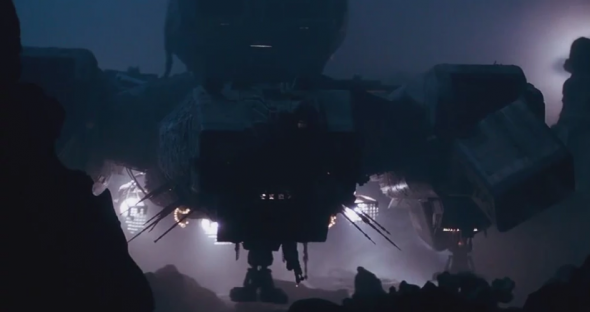
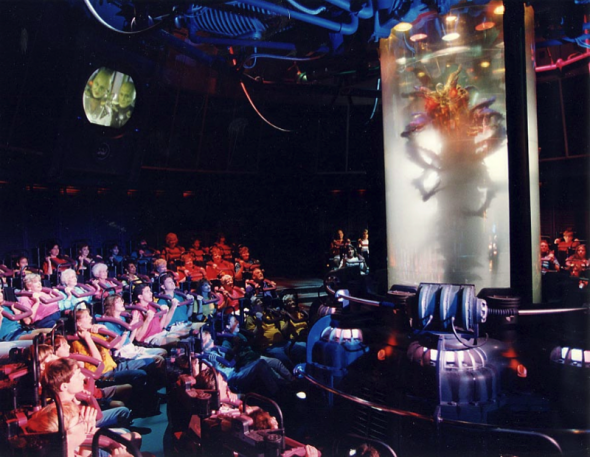
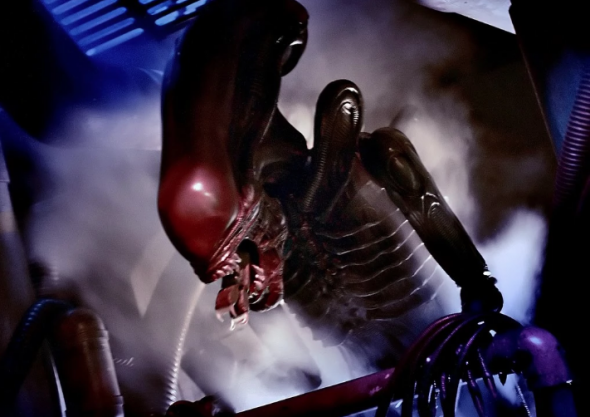
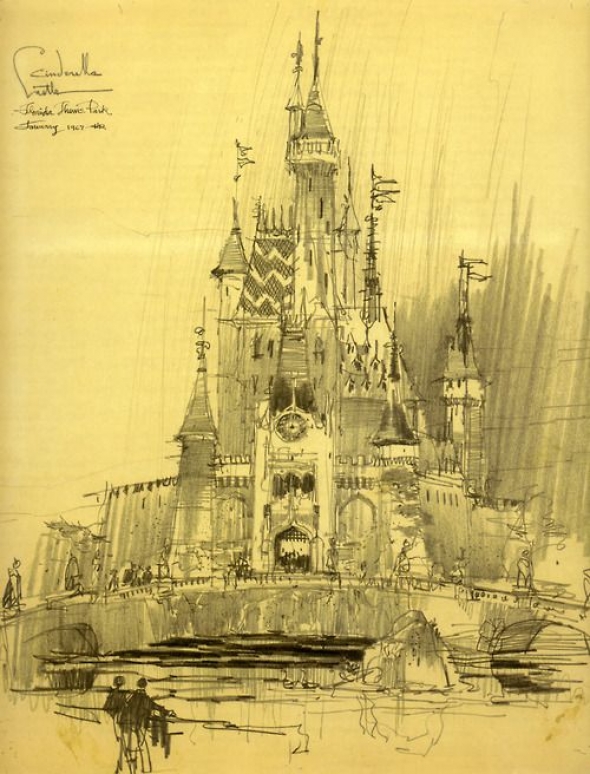

Add new comment